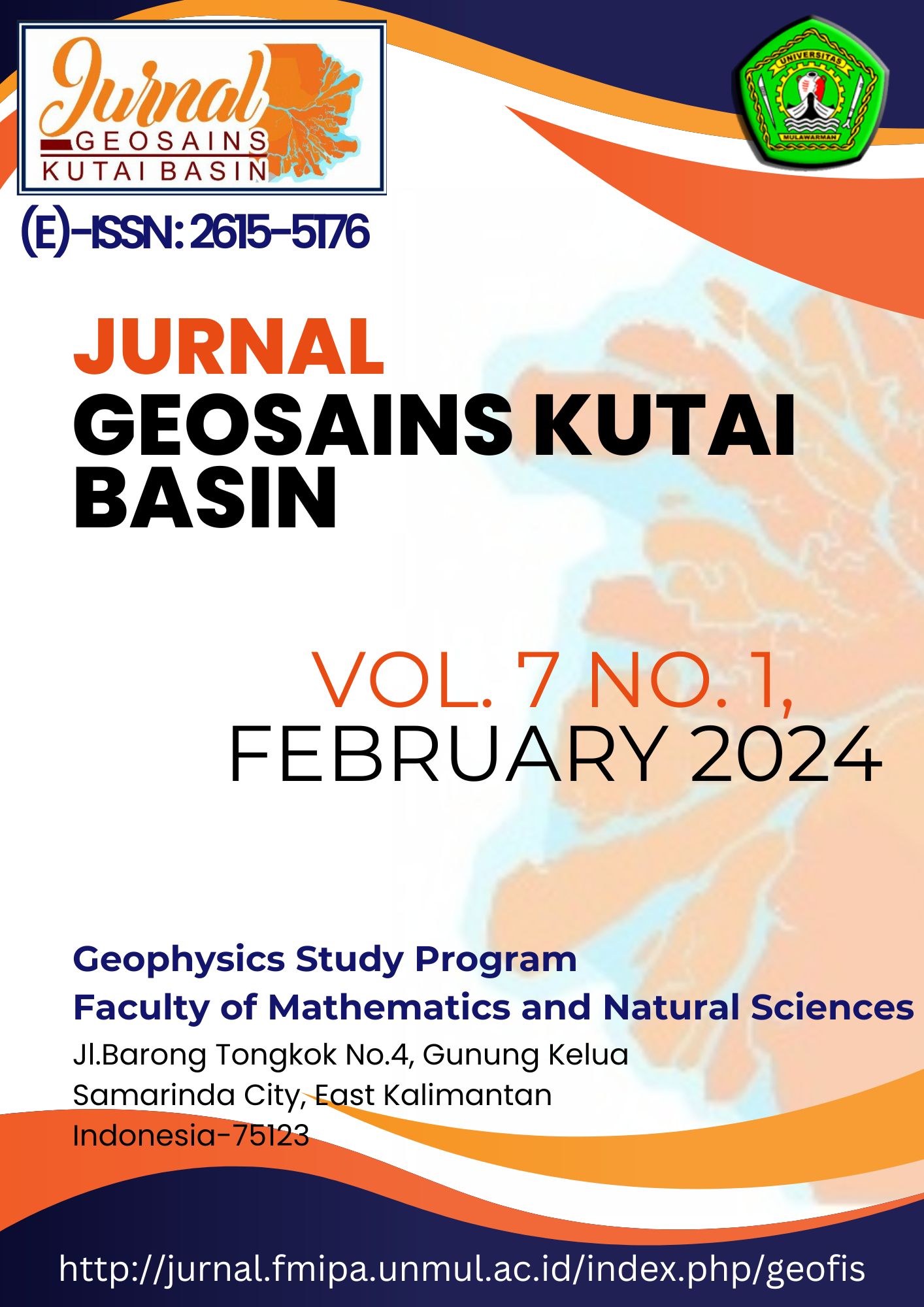Studi Prospek Reservoar Hidrokarbon Berdasarkan Karakteristik Petrofisika di Lapangan ‘X’ Cekungan Sebuku
DOI:
https://doi.org/10.30872/geofisunmul.v7i1.1275Keywords:
Hydrocarbon, Reservoir Zone, Qualitative, QuantitativeAbstract
The research was conducted to determine the hydrocarbon reservoir zone in the LIM-1 well, which was analyzed using quantitative and qualitative methods to assess the reservoir type involving several log data, including gamma ray (GR), neutron (NPHI), and density (RHOB). The quantitative analysis stage is the determination of hydrocarbon content by the crossover of NPHI log data, and RHOB log data with six target zones. The quantitative analysis stage in this study uses Interactive Petrophysics (IP) software version 3.5 on well LIM-1, also with target zone 1 only. The results obtained from qualitative and quantitative analysis at well LIM-1 show that there are three types of reservoirs in the study area from several target zones according to depth, which are dominated by oil, water, and gas.


